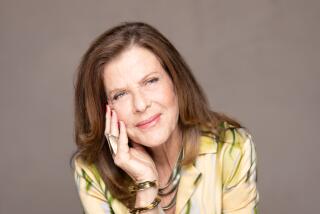KONING EIZENBERG
Koning Eizenberg designed Pluralistic School 1, an elementary school in Santa Monica, and a community center for West Hollywood, which is under construction.
If architecture expresses how a society sees itself, it is shocking to see what we accept as appropriate environments for high-school students. Whether in modern or classical skin, most schools are institutional dinosaurs whose image and organization speak of uniformity, not vision and potential. Typically, high-school design ignores the changes in technology (beyond putting computers on desks), social structure and knowledge about creative motivation. Architecture can both inspire and better accommodate the way contemporary youths live and learn. We turned to a group of high-school students in developing a model of what one such environment might be.
Our clients are 10 students from the HeArt Project, a multidisciplinary arts program in continuation high schools. Each student had left his or her local high school and is pursuing an education in this alternative program. These articulate and committed students had not found their former schools fulfilling, and their opinions are based on this.
The students’ recipes for success for high-school design are keyed to an environment where everyone, teachers and students, knows everyone (they recommend a maximum 500 students); where the opportunity to socialize outside the classroom is strong; where the arts propel their educational motivation; where they have an opportunity to show parents, peers and teachers what they do well; where there is a chance to be mentored by community members such as retirees and in turn help others; and where there are more choices and a reduction in physical barriers.
Rather than approach school design from the point of view of efficiencies, our clients are more interested in the experience itself. They are open to the idea of reusing existing buildings, such as apartment buildings or warehouses. They don’t care if they have to walk down the street to the library or go to the park for athletics. They want a safe environment; they want cozier classrooms arranged to accommodate both group and individual work; they want gardens to sit in and an open campus atmosphere instead of a fenced-in environment; and they want it to be “cool,” to acknowledge their taste.
In response, we envision a composite environment using a portion of the Hollywood site. How much land do we need? Plugged in to network with a library and park nearby, maybe 80,000 square feet. The school has big trees and great social spaces. The students all agreed they hated cafeterias: the lack of choice in seating options, the controlling atmosphere. Food here may come on wheels, through varied delivery systems, and be eaten outside, where faculty could join students. Some indoor program spaces are built new; some are housed in adapted portable classrooms. Existing buildings, such as warehouses, are creatively appropriated for the arts, classrooms, computer labs, seminar rooms, offices--reconfigured the way many media companies do. Opportunities for art exhibitions and performances are creatively integrated.
The campus is maintained continuously. It is a place that demonstrates to students that they are valued by acknowledging their intellectual, creative, visual and social worlds. It’s a place, by extension, where students are encouraged to actively participate in their learning experience. *
Design team: Koning Eizenberg Architecture--Julie Eizenberg, Brian Lane, Roderick Villafranca, Suzan Edwards with Michael Pinto of Intercision.
More to Read
The biggest entertainment stories
Get our big stories about Hollywood, film, television, music, arts, culture and more right in your inbox as soon as they publish.
You may occasionally receive promotional content from the Los Angeles Times.










